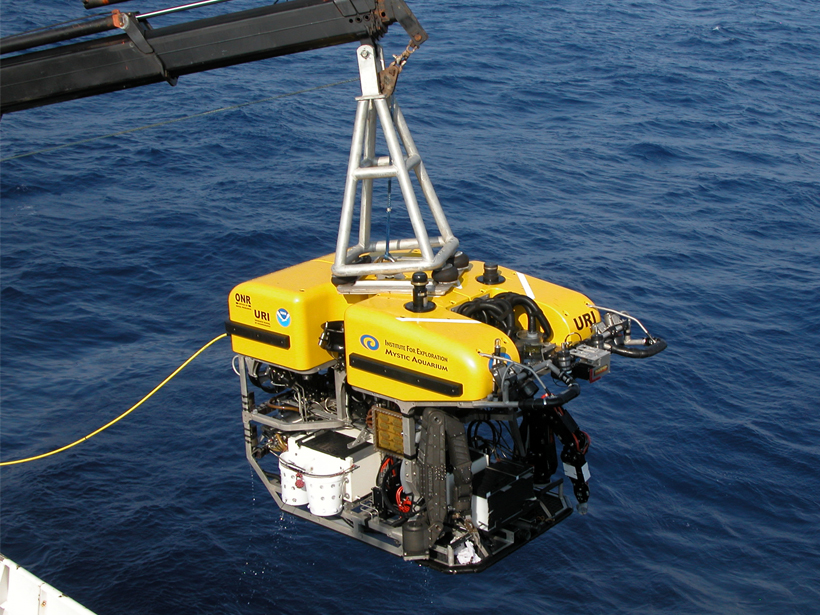Source: Journal of Geophysical Research: Oceans
Around the world, seafloor sediments harbor vast amounts of methane. When it escapes into seawater—either by natural seepage or because of such human activities as the 2010 Deepwater Horizon oil spill—this potent greenhouse gas becomes food for certain microbes, limiting the amount that ultimately enters Earth’s atmosphere.
Now Chan et al. report new insights into the chemical dynamics involved in microbial consumption of methane released from two seafloor sites. In a companion paper, they also share new findings on how the total extent of microbial methane consumption can be tracked using changes in the ratios of methane molecules containing different isotopes of carbon.
In both studies, the researchers collected seawater from an active methane seepage site at Hudson Canyon off coastal New York while aboard the R/V Endeavor. They also sent the Hercules, a remotely operated vehicle, to gather seawater at a site 17 kilometers from the Deepwater Horizon wellhead in the Gulf of Mexico. In the laboratory, they incubated these samples in temperature-controlled containers, seeded some with extra methane, and monitored them for 80 days.
As reported in the first study, methane-munching microbes in the seawater consumed very little of the dissolved gas for several days or weeks. The microbial populations then suddenly increased, or bloomed, and quickly gobbled up the rest of the methane in just a few days, following a simple, linear consumption rate. This pattern held true across samples from different sites, even though exact timing and rates varied.
The researchers also tracked changes in the ratios of different carbon isotopes in the methane, which microbes consume at different rates. From earlier research, they suspected that these rates would vary over the course of a microbial bloom. But in the companion study, they report that isotope ratio changes in the seawater samples followed a straightforward pattern during the bloom phase, suggesting that this pattern could serve as a simple proxy to track methane consumption in a bloom.
These two studies provide a deeper view of microbial methane oxidation, a process that is difficult to examine in the field yet is suspected of consuming tremendous amounts of the gas. The work helps refine scientific understanding of what happens when methane is released into seawater and could inform ongoing research into the aftermath of the Deepwater Horizon spill. (Journal of Geophysical Research: Oceans, https://doi.org/10.1029/2019JC015594 and https://doi.org/10.1029/2019JC015603, 2019)
—Sarah Stanley, Science Writer
Citation:
Stanley, S. (2020), Investigating rates of microbial methane munching in the ocean, Eos, 101, https://doi.org/10.1029/2020EO138733. Published on 16 January 2020.
Text © 2020. AGU. CC BY-NC-ND 3.0
Except where otherwise noted, images are subject to copyright. Any reuse without express permission from the copyright owner is prohibited.

